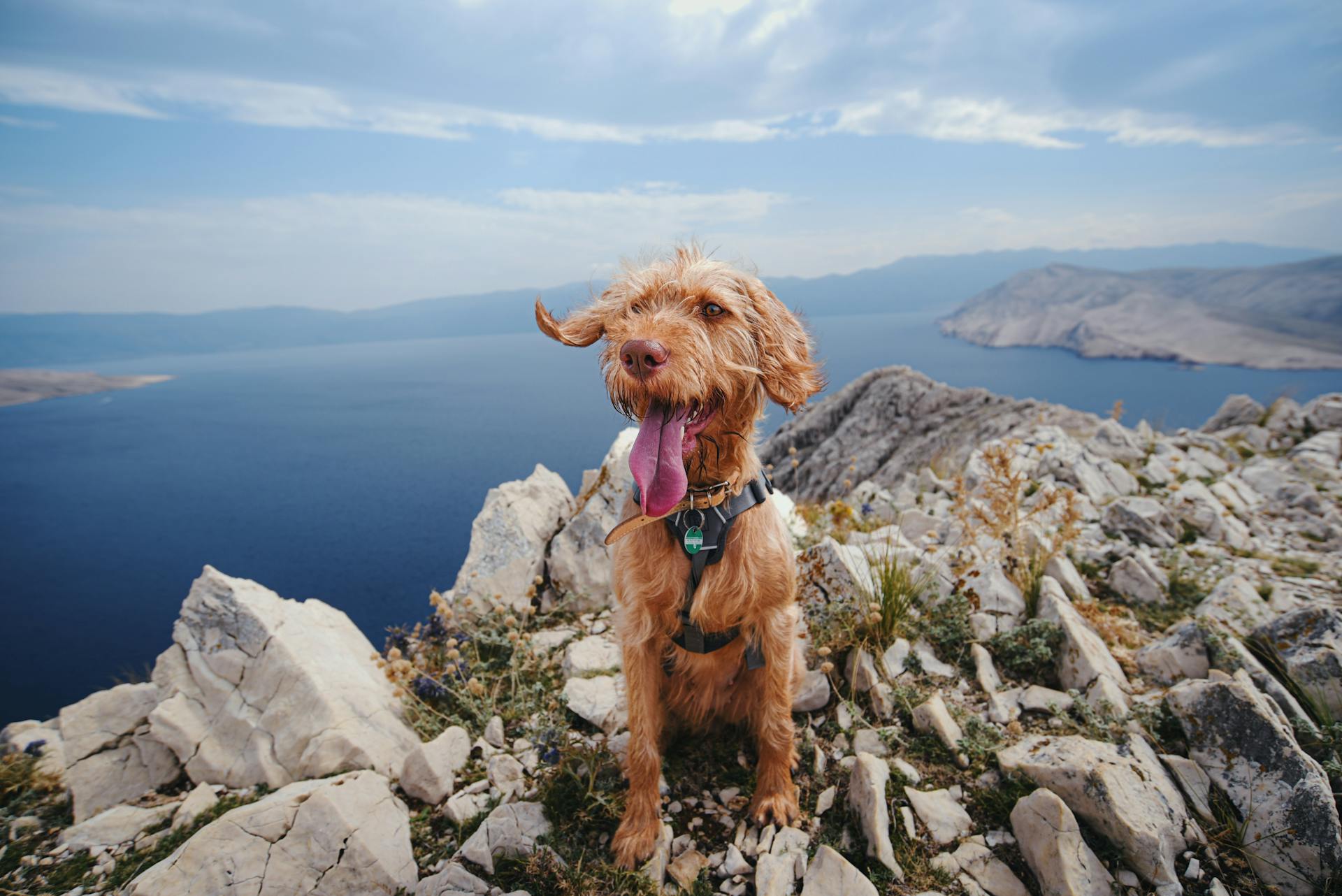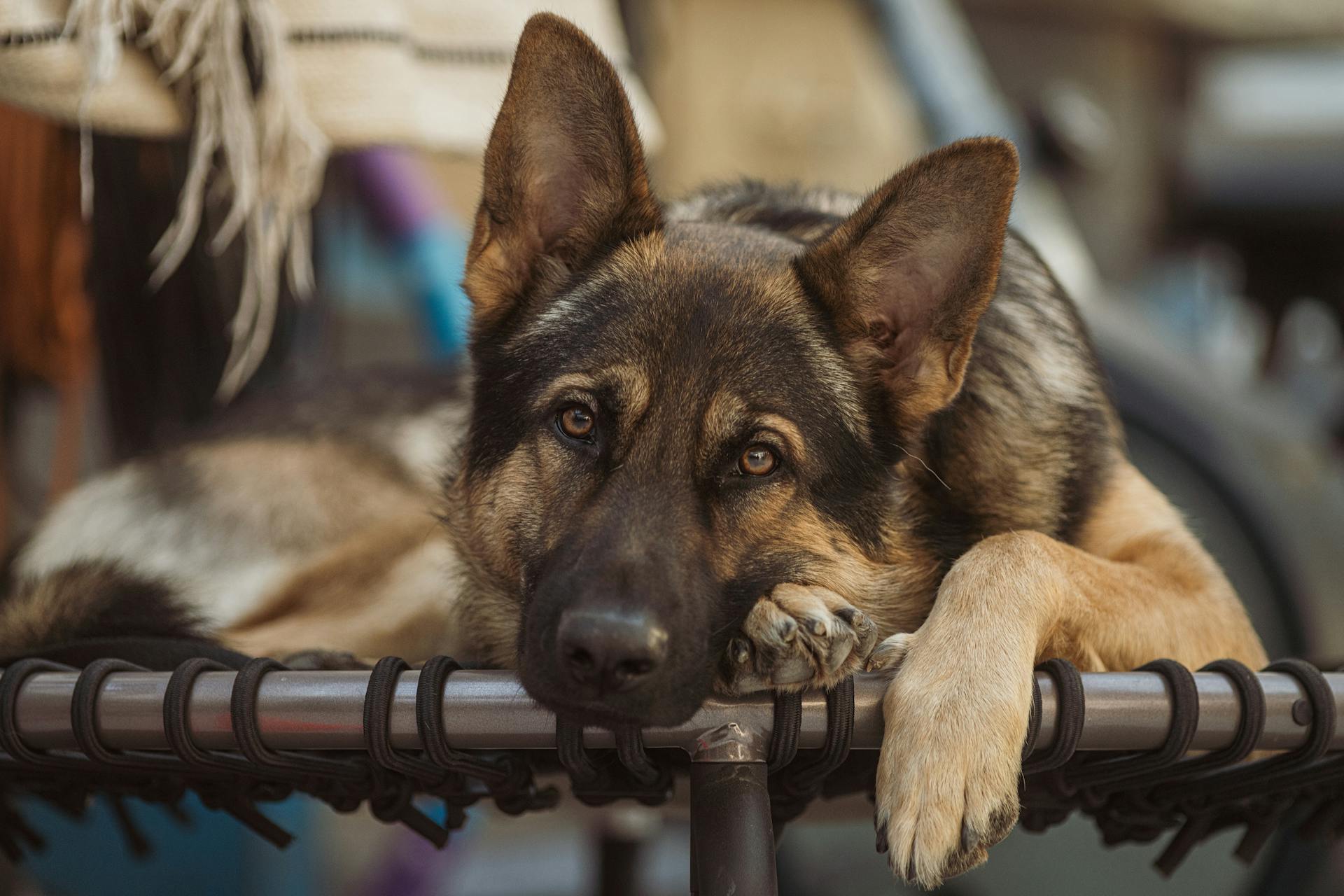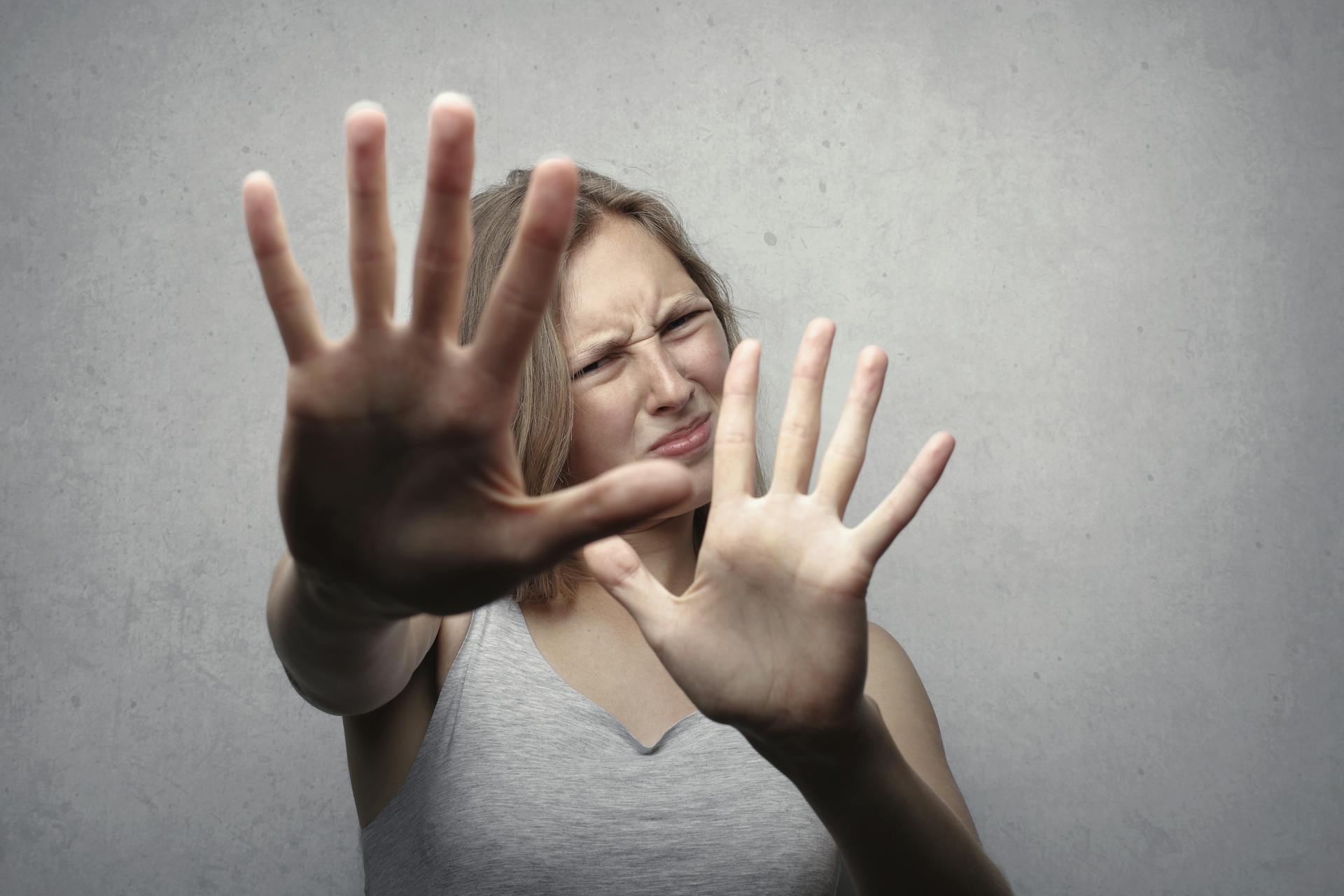
The Caucasian Shepherd Ovcharka is a majestic breed that originated in the Caucasus region. They were bred to guard livestock and property from predators.
These dogs are naturally protective of their flock and territory, making them excellent watchdogs. They are also highly intelligent and trainable.
Their thick double coat protects them from harsh mountain weather, and they are well-suited to life in cold climates.
Temperament & Intelligence
The Caucasian Shepherd Ovcharka is a guardian dog that should always be taken seriously. They're bold, confident, and fierce when they sense nearby threats, but soft, loyal, and kind toward their family members.
They can be wary of strangers, highly territorial, and protective, so it's essential to socialize them properly. With firm boundaries, consistency, and a patient owner, they can become loving and loyal companions.
Their intelligence and independence make them easy to train, but also means they can be stubborn at times. Experienced dog owners who are well-versed in training are best suited for this breed.
Consider reading: Are German Shepherds Loyal
Here are some key temperament traits to consider:
Overall, the Caucasian Shepherd Ovcharka is a unique breed that requires careful consideration and attention. With the right owner and training, they can thrive as loving and loyal companions.
Pet Compatibility
The Caucasian Ovcharka may be able to live harmoniously alongside other pets if they're brought up together and both trained and socialized properly. Early socialization is key to increasing the likelihood of introducing a Caucasian Ovcharka to other household pets.
In recent years, Caucasian Ovcharkas have become increasingly used as family companions, but they're not suitable for most first-time dog owners. These dogs can be challenging to train for a novice due to their large sizes and independent natures.
They're great with children in the family, but caution should be taken when introducing new children, as with any dog. Any rough-play between "the dog's child" and an unfamiliar child may cause this dog to go into protection mode.
A word of caution is also necessary when introducing visitors, as some Caucasian Ovcharkas may be dog aggressive. Caution should be taken with all visitors, children, and other dogs, especially if they haven't been extensively trained.
It's worth noting that the breed's propensity toward aggression may make them incompatible with other animals, so it's essential to socialize them properly from an early age.
Owning a Dog
The Caucasian Shepherd Ovcharka is a large and powerful breed that requires a lot of space to move around.
They need daily exercise, such as long walks and playtime, to stay happy and healthy.
These dogs are not suited for small living spaces or apartments, so make sure you have a big yard before bringing one home.
With proper training and socialization, they can make great family pets and loyal companions.
However, they can be wary of strangers and may require time to warm up to new people, so be patient with them.
Owning a Dog
Having a dog can add up to $1,500 to your annual expenses, including food, vet bills, and supplies.
Dogs need regular exercise to stay happy and healthy, and a daily walk of at least 30 minutes is a must.
The average lifespan of a dog is 10-13 years, depending on its breed and size.
You'll need to plan for regular grooming sessions, which can cost between $30 to $90 per session.
A dog's diet should make up about 25% of your household's food budget.
Some breeds, like Labradors, are generally easier to train than others, like Bulldogs.
A dog's socialization period is between 8 and 11 weeks old, making it crucial to expose them to new people and environments during this time.
A well-exercised dog is a calm dog, and a calm dog is a happy dog.
Some breeds, like Poodles, require regular trimming to prevent matting and tangling.
A dog's sense of smell is up to 10,000 times more sensitive than a human's.
Guardian Dog Breeds
If you're considering owning a dog that's more than just a pet, you might want to look into livestock guardian breeds. These dogs have been used for centuries to protect sheep, goats, and other livestock from predators like wolves, jackals, and bears.
The Caucasian Ovcharka is a great example of a livestock guardian breed, originating from Russia and traditionally used to guard sheep and goats. They're also highly social dogs that like to work closely with shepherds.
In mountainous regions, Caucasian Ovcharkas would stand guard during the summer months and move back down to the plains and villages during the colder months. They're not meant to herd or round up livestock, but to protect them from predators.
If you're interested in adopting a Caucasian Ovcharka or a similar breed, you might want to consider the Central Asian Shepherd or the Armenian Gampr, which share similar ancestors and geographical origins.
You might enjoy: Bernese Mountain Dog 6 Months
Cost
Owning a dog can be a significant investment, and one of the biggest costs is the initial purchase price of the dog itself.
The cost of a Caucasian Ovcharka in the United States can range from $1500 to $2000 on average.
If you're looking for a dog from a guaranteed pure blood line, be prepared for a much higher price tag.
Those dogs can be quite difficult to obtain, especially if you're looking to import one.
You'll need to factor in additional costs, such as training, vaccinations, and spaying/neutering, which can add up quickly.
The cost of owning a dog is not just a one-time expense, but an ongoing commitment that requires regular care and attention.
Care and Maintenance
To keep your Caucasian Shepherd Ovcharka healthy and thriving, you'll want to pay attention to their diet and feeding habits. Males require anywhere from 2445 to 6515 calories per day, while females need between 2275 and 5930 calories.
It's essential to feed them a large to extra large dog breed food, as they were bred to work and survive on rugged climates with marginal diets. If your Ovcharka isn't working as a livestock guardian, keep a close eye on their food intake and weight to prevent obesity.
To maintain their coat, brush your Ovcharka twice a week, or more often during their heavy shedding season. You'll also want to trim their nails regularly, clean their ears, and brush their teeth every few days to prevent painful ear infections and dental problems.
A unique perspective: Large Mountain Dogs
Diet/Eating Habits

When feeding your Caucasian Ovcharka, it's essential to consider their size and activity level. They require a large to extra large dog breed food to ensure their longevity and lifetime health.
As an extra-large breed, they need to eat more calories than smaller dogs, with males requiring anywhere from 2445 to 6515 calories per day, depending on their activity level. Females typically require fewer calories, between 2275 and 5930 calories per day.
To give you a better idea, here is a breakdown of the estimated daily caloric intake for Caucasian Ovcharkas based on their size and activity level:
It's also crucial to feed them two to three times daily, as giant dogs need to eat more calories to maintain their weight, but you don't want to feed them too much in a single meal, which can increase the likelihood of gastric dilatation-volvulus (GDV) or bloat.
Grooming Your
Grooming your Caucasian Ovcharka is a crucial part of their care and maintenance. They shed a lot, so be prepared for regular brushing.
You'll want to brush your Ovcharka's coat at least twice a week, but be prepared for a heavy shed once a year that'll require more maintenance. This is a good opportunity to use a pin brush, comb, and deshedder to keep their coat in tip-top shape.
Their nails grow faster than average, so regular trimming is a must. You should also check for splitting or cracking to prevent any issues.
Cleaning their ears regularly is essential, especially if they spend a lot of time outdoors. This will help prevent dirt and debris buildup, which can lead to painful ear infections.
Brushing your Ovcharka's teeth every few days is a good habit to get into, but don't forget to schedule a professional tooth cleaning with your vet once a year.
Health and Wellbeing
The Caucasian Shepherd Ovcharka is generally a healthy breed, but their large size can lead to a shorter lifespan. A study found the median lifespan to be around 5.4 years, though other estimates range from 10 to 12 years.
Related reading: 100 Years Ago Original Boston Terrier
Their giant size also puts them at risk for certain health conditions. Entropion, where the eyelid grows inward, can occur, as can cataracts.
Hip and elbow dysplasia are common issues in large breeds like the Caucasian Shepherd Ovcharka. Responsible breeders will screen their dogs for genetic conditions and provide evidence of hip and eye evaluations for the parents.
GDV, or gastric dilatation-volvulus, can also be a concern due to their large size. Obesity is another risk factor, so it's essential to provide a balanced diet and plenty of exercise.
Here are some common health issues to be aware of:
- Entropion
- Cataracts
- Hip dysplasia
- Elbow dysplasia
- GDV
Training
Training a Caucasian Ovcharka requires a lot of obedience training and positive reinforcement from a young age to grow to be well-rounded adults.
They need early socialization to help them become confident and calm in new situations.
Their strong will and stubbornness can make training challenging, and owners may wish to consult with professional dog trainers or behaviorists to help them get off on the right foot.
Without proper training, they can become unruly, possessive, and aggressive.
Their lack of patience means they can get frustrated easily, so it's essential to keep training sessions short and fun.
Physical Characteristics
The Caucasian Shepherd Ovcharka is a powerful and athletic dog breed, with a muscular build and heavily boned structure that's proportionate to its height. They have a large, wedge-shaped head with a blunt muzzle and high-set hanging ears, which may be cropped.
Their eyes are deep-set, oval-shaped, and typically brown in color. The breed comes in three distinctive coat types: long, intermediate, and short, all of which are double-coated and thick. The long-coated variety has a long outer coat and dense undercoat, giving them a maned appearance and feathering on their hind legs.
Here are the accepted coat lengths and their characteristics:
Males are more massive and powerful than females, who are smaller and lighter in build. The breed's overall size is impressive, with males reaching 27-30 inches in height and weighing 110-170 pounds, while females reach 25-28 inches in height and weigh 100-150 pounds.
Appearance
The Caucasian Ovcharka is a powerful and athletic dog, with a muscular build and heavily boned structure in proportion to its height. They have a large, wedge-shaped head that tapers slightly to a blunt muzzle.
Their ears are high-set and typically cropped, but ear cropping is an extremely painful procedure and is now illegal in some areas in Europe. Their eyes are deep-set, tilted, and usually brown in color.
The Ovcharka's body is heavily built, with a broad and deep chest, and a short but extremely muscled neck. Their paws are heavy, large, and have hair between their toes to keep them protected and insulated.
The Caucasian Ovcharka comes in three distinct coat types: long, intermediate, and short. All coats have a light-colored undercoat and a wide variety of coloring and markings in their outer coat.
Here are the three coat types in more detail:
The Ovcharka's height and weight vary depending on their sex, with males typically being more massive and powerful, and females being smaller and lighter in build. The average height for males is 27-30 inches, and for females is 25-28 inches. The average weight for males is 110-170 pounds, and for females is 100-150 pounds.
Characteristics
The Caucasian Ovcharka is a spirited and intelligent breed, known for its strong-willed nature. They're gentle and demonstrative with family members, but can be quite wary of strangers.
One of the breed's most distinctive features is its active defense reaction and strong territorial instincts. This means they'll protect their flock, family, and property with lightning-quick speed, even if it's just a perceived threat.
Caucasian Ovcharkas have incredibly keen senses, making them very alert and good trackers. They can pick up on even the slightest changes in their surroundings.
Their alertness can sometimes manifest as warning barks and growls, particularly at night. This is just a natural response to their heightened senses.
With proper socialization and patient training, you can help temper the breed's characteristic suspicion and aggressiveness towards strangers. This will result in a mature dog with good judgment.
The breed is also surprisingly hardy and adaptable, able to thrive in a wide range of climates.
On a similar theme: How Strong Are German Shepherds
Frequently Asked Questions
Is the Caucasian Shepherd the strongest dog?
The Caucasian Shepherd is considered one of the strongest dog breeds, surpassing the strength of popular breeds like the Tibetan Mastiff, American Pit Bull Terrier, and Rottweiler. Its exceptional strength makes it a formidable force.
Are Russian bear dogs legal in the US?
Russian Bear Dogs are not inherently illegal in the US, but local regulations may prohibit ownership in certain areas. Check local laws before considering owning one.
Sources
- https://www.dogster.com/dog-breeds/caucasian-ovcharka
- https://www.ukcdogs.com/caucasian-ovcharka
- https://www.sheknows.com/living/articles/1119263/caucasian-ovcharka/
- https://www.forloveoflivestock.com/blog/caucasian-ovcharka-livestock-guardian-dog-breed
- https://molosserdogs.com/view-article/caucasian-shepherd-dog-kavkazskaya
Featured Images: pexels.com


